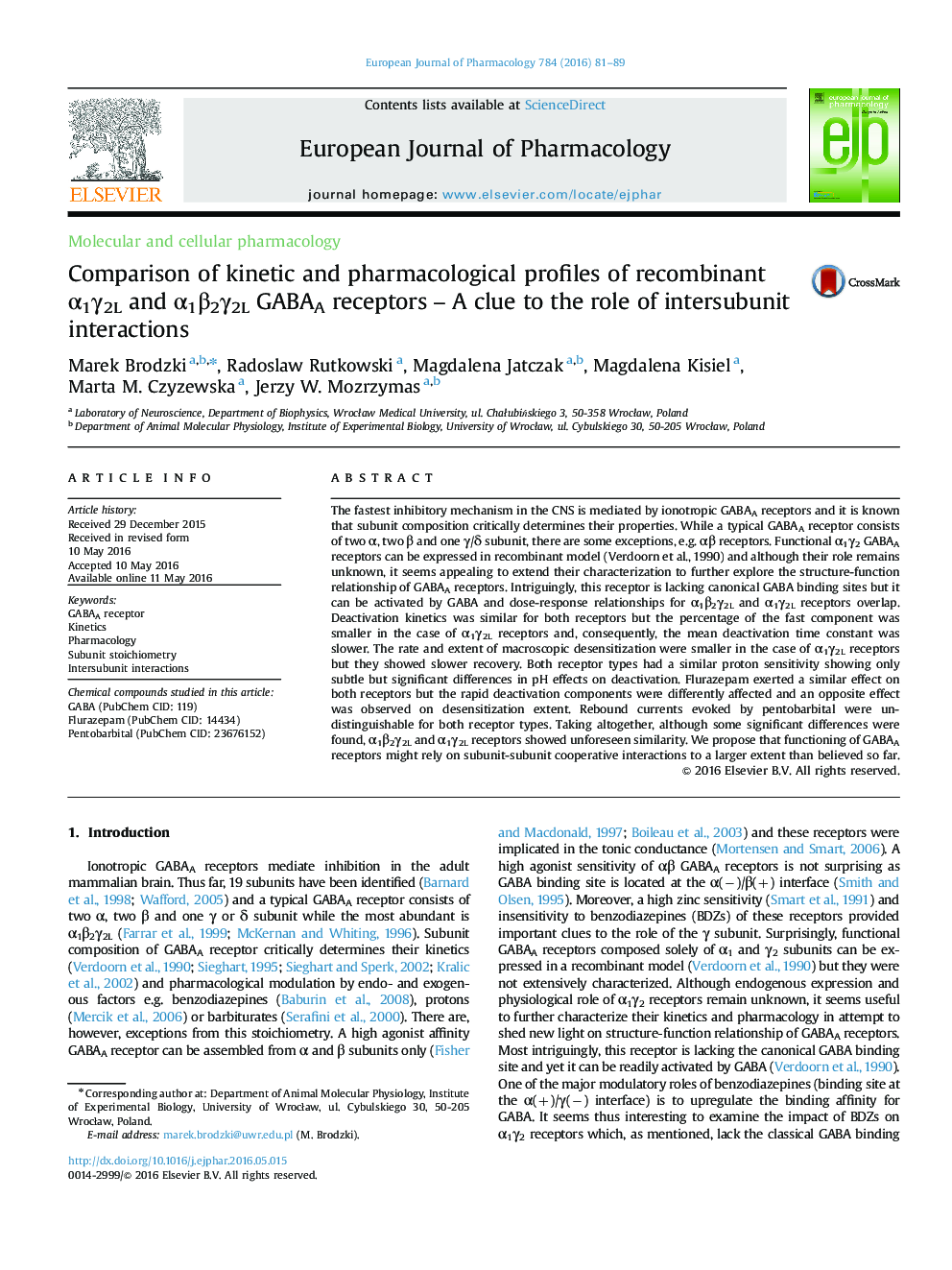| Article ID | Journal | Published Year | Pages | File Type |
|---|---|---|---|---|
| 2530895 | European Journal of Pharmacology | 2016 | 9 Pages |
The fastest inhibitory mechanism in the CNS is mediated by ionotropic GABAA receptors and it is known that subunit composition critically determines their properties. While a typical GABAA receptor consists of two α, two β and one γ/δ subunit, there are some exceptions, e.g. αβ receptors. Functional α1γ2 GABAA receptors can be expressed in recombinant model (Verdoorn et al., 1990) and although their role remains unknown, it seems appealing to extend their characterization to further explore the structure-function relationship of GABAA receptors. Intriguingly, this receptor is lacking canonical GABA binding sites but it can be activated by GABA and dose-response relationships for α1β2γ2L and α1γ2L receptors overlap. Deactivation kinetics was similar for both receptors but the percentage of the fast component was smaller in the case of α1γ2L receptors and, consequently, the mean deactivation time constant was slower. The rate and extent of macroscopic desensitization were smaller in the case of α1γ2L receptors but they showed slower recovery. Both receptor types had a similar proton sensitivity showing only subtle but significant differences in pH effects on deactivation. Flurazepam exerted a similar effect on both receptors but the rapid deactivation components were differently affected and an opposite effect was observed on desensitization extent. Rebound currents evoked by pentobarbital were undistinguishable for both receptor types. Taking altogether, although some significant differences were found, α1β2γ2L and α1γ2L receptors showed unforeseen similarity. We propose that functioning of GABAA receptors might rely on subunit-subunit cooperative interactions to a larger extent than believed so far.
